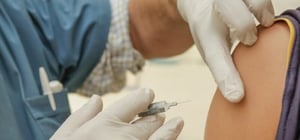In the ever-evolving landscape of biotechnology, Opthea Limited (NASDAQ: OPT) stands as a beacon of innovation, yet its current financial metrics present a mixed bag for potential investors. With a market capitalization of $524.82 million, Opthea is a clinical-stage biopharmaceutical company based in South Yarra, Australia, focused on developing treatments for eye diseases such as wet age-related macular degeneration and diabetic macular edema. The company’s flagship product, sozinibercept (OPT-302), is in Phase 3 clinical trials and aims to offer new hope in complementing existing VEGF-A inhibitors.
Despite the promise of its drug pipeline, Opthea’s financials tell a story of caution. The company’s revenue growth has dipped by 26.20%, and it has yet to turn a profit, with earnings per share (EPS) currently at -2.25. This negative EPS reflects the high costs associated with drug development and commercialization, common in the biotech industry but nonetheless a critical factor for investors to consider.
The stock’s current price sits at $3.41, unchanged recently, and falls within a 52-week range of $1.89 to $5.92. Notably, the technical indicators reveal a somewhat bullish sentiment. The 50-day moving average aligns with the current price, while the 200-day moving average is slightly higher at $3.87, indicating potential resistance ahead. However, the Relative Strength Index (RSI) at 74.29 suggests the stock is currently overbought, urging caution for those considering entry points.
Analyst sentiments further underscore a cautious approach. With zero buy ratings, two hold, and one sell rating, the consensus leans towards neutrality. The average target price of $1.33 implies a significant downside of approximately 60.90% from the current price, a stark warning for investors banking on short-term gains. This potential downside reflects market skepticism about the company’s ability to meet its ambitious goals without significant revenue to back them up.
Financially, Opthea operates without a traditional valuation matrix, with P/E, forward P/E, and PEG ratios all marked as N/A. This is typical for companies in the R&D-heavy early phases of drug development. The company’s free cash flow is notably negative at -$79.3 million, highlighting the cash-intensive nature of its operations. Furthermore, the absence of dividends and a payout ratio of 0.00% means investors cannot look to recurring income through dividends as a buffer during volatile periods.
While the potential for Opthea’s leading treatment to disrupt the market is enticing, especially if Phase 3 trials prove successful, the financial realities and analyst projections provide a sobering counterbalance. For investors, this creates a complex decision matrix, weighing the high-risk, high-reward nature of investing in biotech innovations against the current financial outlook and market sentiment.
Ultimately, those considering adding Opthea to their portfolio should do so with a clear understanding of the inherent risks. A watchful eye on trial outcomes and regulatory updates will be crucial, as these could significantly sway the stock’s trajectory. Opthea exemplifies the dual-edged sword of biotech investing—where scientific breakthroughs can lead to dramatic financial gains, yet the path to commercialization is fraught with financial hurdles that require careful navigation.






































